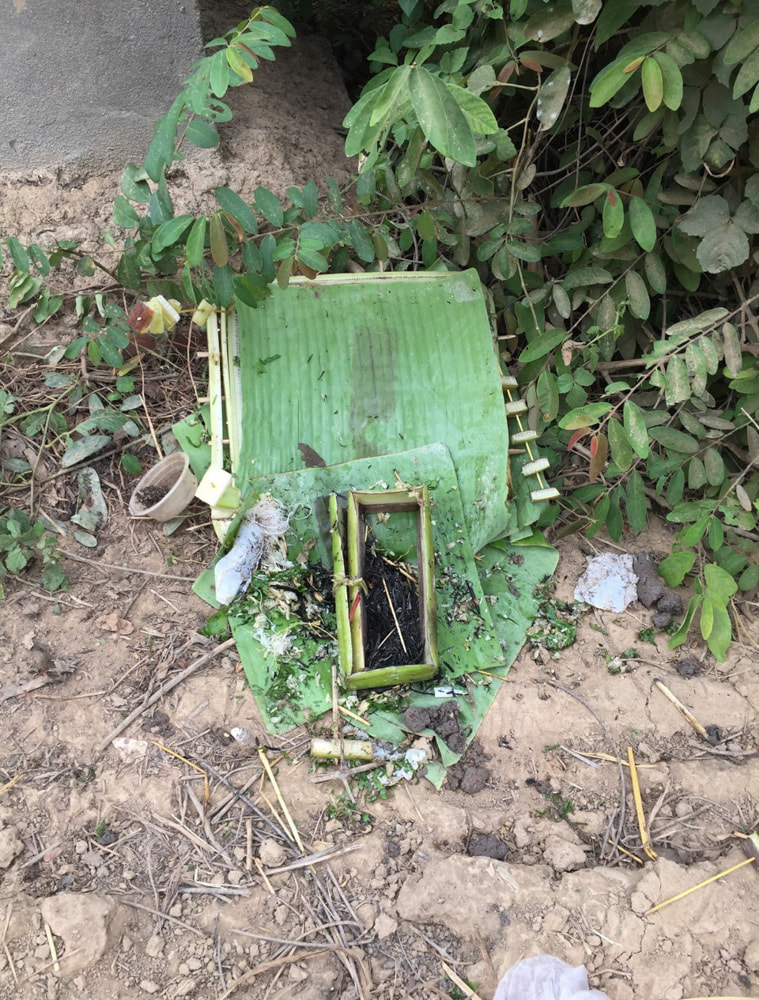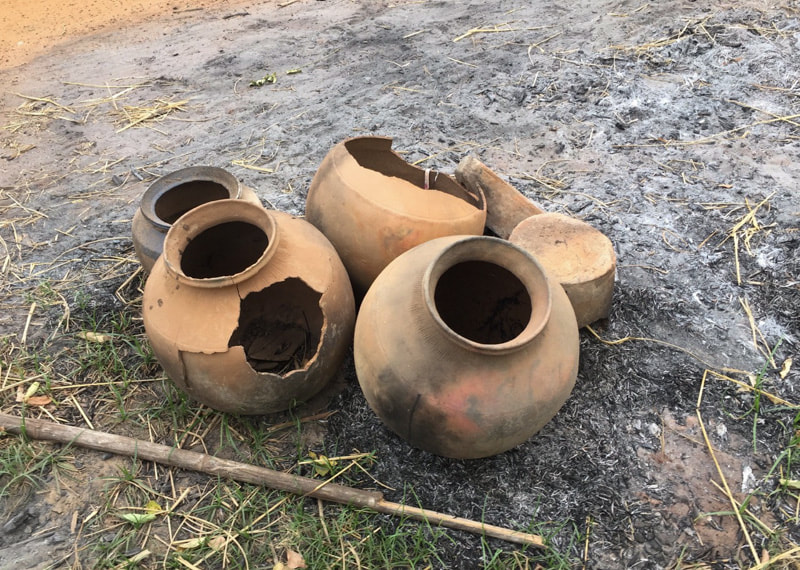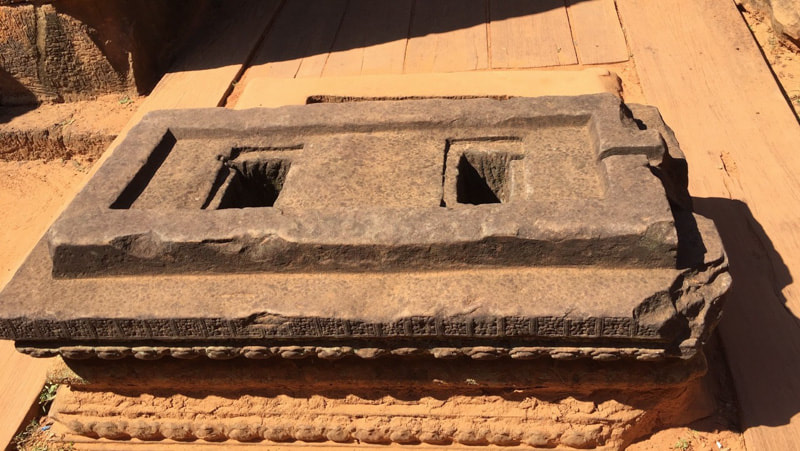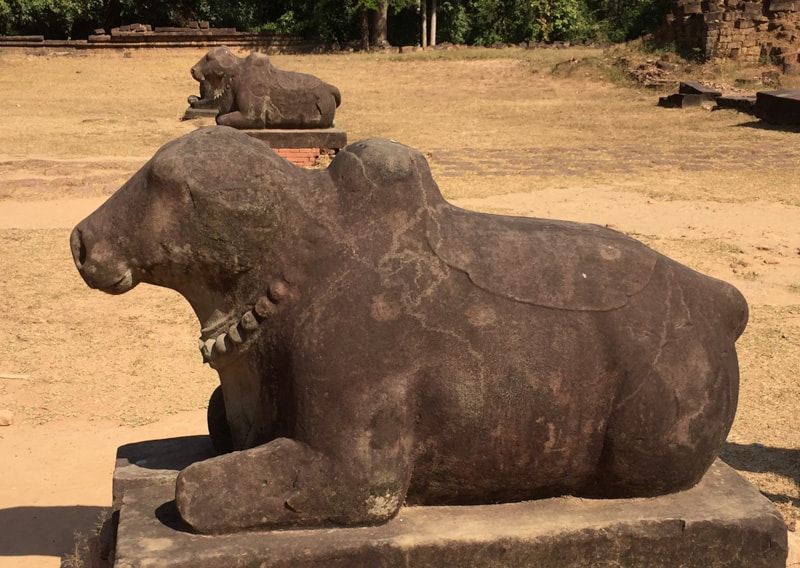|
I went on a tourist trip to Cambodia earlier this year. I passed in one village, at the end of a property, a small shrine made of banana leaves. I was told that something bad had occurred to one or more of the family. The shrine enabled offerings to be made and for the bad to be propitiated. Life for the family could move on. Cambodian society as a whole has an appalling recent history. Its territory was the target of massive American bombing during the Vietnam War. Under the Pol Pot regime in the 1970s about 1.5-2m are estimated to have died out of a total population then of around 7m. This blog discusses three ways about how to move on from disastrous happenings and appalling memories: propitiation, expiation and reconciliation. It discusses the uneasy relationship between the way individuals deal with bad memories and their collective handling by societies as a whole. Background: 20th century human disasters The recent centenary of the ending of the First World War marks the latest hundred years of self-inflicted human disasters and atrocities around the world. Adding to the disaster of the First World War itself, the inter-war years saw the atrocities of Stalin’s collectivization program, and the Spanish civil war. The Second World War brought its own disasters including the death camps of the holocaust. Since then not a continent has escaped one horror or another - from partition in India, to Mao Zedong’s ‘great leap forward’ and cultural revolution in China, to genocide and civil wars in Africa, to the ‘disappeared’ in Central and South America. Cambodia’s own experience is thus but one in an appalling litany over the last one hundred years. The legacy of these disasters extends way beyond those immediately affected. The legacy affects generations of individual lives. It also has a lasting effect on societies at the collective level – how they see themselves and how they view their social and political organization. The question both for individuals and for societies is how to treat these memories. In particular it is about how to address the bad memories – of sadness and suffering endured and sadness and suffering inflicted. Selective memory In ordinary life we all know that our individual memory is highly selective. We hold on to good memories because they provide solace, energize and refresh us. We try to suppress the bad because they sap us. At the same time we recognize that not all memory is under our conscious control. Stored memories, good and bad, serve an important function as unconscious and intuitive signals. They have a way of popping up again, bidden or unbidden. This selective use of memory in our ordinary life stands in contrast to prevailing attitudes towards collective memory. There the prevailing attitude is that we should not forget. In particular we should not forget the bad. The fashionable aphorism, attributed to the American philosopher George Santayana, is to the effect that those who forget history are condemned to repeat it. It is an aphorism that initially appeals. It should however be rejected. It is fashionable and false. It seems to assume that the past will repeat in the same form,. It further assumes that we will always learn the right lessons from the past, and that there will be only one right interpretation instead of different competing interpretations . It assumes we will not encounter new and different challenges. It thus takes far too sanguine a view of the way history unfolds. Nor does it appeal to those whose belief system is framed in terms of the eternal turning of the wheel. But whatever our view of history, we still need ways to treat memories of the bad. Three models Over the last hundred years three main models for treating the bad can be distinguished. They apply both at the level of individual behavior and collective. Propitiation The first model is that of propitiation. Historically, at the individual level, propitiation involves offerings of gifts or sacrifice as a way to put the past to rest. It has long been practiced throughout the world and across all moralities and belief systems as a means to move on from something bad. At the collective level, the reparation payments demanded of Germany at the end of the First World War can be viewed as a form of enforced propitiation. Expiation At the end of the Second World War, a different model was tried – the expiation model. Expiation also has a long history as a way to move on from the bad. It involves the explicit attribution and acknowledgment of responsibility and culpability. Along with responsibility goes the idea that retribution may be justified. Historically, for individuals, expiation often took the form of a pilgrimage. In this case the acknowledgment of responsibility or culpability is assuaged by an act of atonement. Pilgrimage, of course, remains important across different belief systems, including in Cambodia. At the collective level, after the Second World War expiation involved war crime trials as a way of attributing responsibility and demanding retribution. The Morgenthau plan intended to deny Germany the possibility of rebuilding its industrial base (but not implemented) was another way of demanding expiation, involving both retribution and atonement. Currently in the US there is some discussion of the possible role of reparations in the context of injustices in African American history. The form reparations might take is unclear. However, because it acknowledges guilt and culpability it can be classed as a possible act of expiation more than propitiation. Mexico has also recently requested apologies from Spain and the Vatican for the Conquest. Apologies can possibly be seen as a form of expiation. Reconciliation and Not Forgetting The current international model for moving on from the bad takes the form of ‘Truth and Reconciliation’ panels and procedures. It is about uncovering what has been concealed, full exposure for the bad that happened, maintaining the memory and not forgetting. It is intended to apply both to individuals and the collective. It differs from expiation because it largely separates the attribution of responsibility from retribution. Unlike propitiation, it is not intended to relegate memory to the past but to hold it in the present. The evolution There has been a natural evolution between these three different models. After the First World War, propitiation in the form of reparation payments backfired. They stoked resentment and imposed an economic burden and sense of unfairness that contributed to the rise of Nazism. The Post Second World War model of expiation also came to be seen as flawed. Justice and retribution meted out by victors does not sit comfortably with the idea of the impartiality of the rule of law. More importantly, it involved a highly selective attribution of responsibility & culpability, confined to leaders. This airbrushed out the extent to which there was a more generally shared responsibility and culpability for the rise of Nazism that needed, in some way, to be recognized. The expiation model has thus largely been replaced by the idea of treating the bad by getting to the truth about what happened, and by recognizing the extent to which responsibility and culpability is shared. The mantra is to forgive but not to forget. Memory as part of the present This evolution of how individuals and society collectively can treat appalling memories and yet move on seems to have involved a natural progression of thinking and treatment. We have ended in a situation where transparency is the key and the record is deliberately to be kept alive as part of the present. There been about 40 cases worldwide where Truth and Reconciliation procedures have been followed in one form or another since the 1980s. Perhaps the best known is that of South Africa following the collapse of apartheid. They have been used elsewhere in Africa, in Central and South America in connection with the ‘disappeared’, and in South and South East Asia in connection with civil strife. Canada has used Truth and Reconciliation procedures in connection with indigenous communities. In the US there has been some experience at the community and state level. Cambodia is a further case where a variant of the Truth and Reconciliation model is being used to come to terms with the past and in particular with the atrocities of the Pol Pot regime. An international tribunal was established in 2006 and continues in place. Yet, the impression I received on my visit was that the model had not worked as intended. Domestic opinion was said to be indifferent and not wishing to prolong the process. The museum in Phnom Penh of the Pol Pot ‘killing fields’ had become a stop on the tourist trail – an ethically awkward juxtaposition. There have been other cases where Truth and Reconciliation procedures do not appear to have got off the ground and have not worked as intended. Thus we are in a situation where we do not seem to have arrived at a fully satisfactory way of treating bad memories, of connecting individual and collective treatment of the bad, for keeping the lessons alive and yet being able to move on. Spinoza: the active and the passive
In order to get a perspective on our difficulties in the treatment of collective memory we can do worse than to go back in time to the writings of Spinoza whose own life in 17th century Holland was directly affected by the wars and persecutions of the time. In his writing on ethics Spinoza tried to give a unified account of how our thinking as rational beings is related to our emotional life. He saw our emotions acting as some kind of selecting or guiding mechanism for our rational thought processes. He also fully recognized the power of memory and its selective use by individuals. He drew a distinction between ‘active’ and ‘passive’ states of mind and between ‘adequate’ and ‘inadequate’ causes. Spinoza associated an active mind with adequate ideas where we understand cause and effect and our own relationship to what we observe. He associated passivity with inadequate ideas where we do not understand what we observe. We engage selectively through our emotions. We take pleasure in what we understand and exclude what we don’t. There are two ways of interpreting Spinoza’s ideas about our selective engagement and applying them to our engagement with bad happenings and bad memories. Passivity and the causal narrative The first application relates to the way we engage with history. Historical narrative offers us a story of cause and effect, of paths that, once taken, lead ‘inevitably’ from A to B, of critical junctures and of tipping points. At the same time the narrative of cause and effect is not always convincing and is often written from a normative perspective that provides only a part of the picture. What also muddies the waters of historical narrative is that there is rarely a clean break between regimes under which bad things happened and their successor regimes that purport to represent the good. There is thus some co-mingling of good and bad that blurs any straightforward ethical narrative. Cambodia is a case in point where today’s regime, now commemorating its 40th anniversary, has substantial links with its predecessor under which atrocities were committed. According to Spinoza, if we have found the narrative of cause and effect in some way blurred or inadequate, then, we will react with passivity. Passivity and the connection to the collective The second application of Spinoza’s ideas of the active and the passive relates to the interaction between the individual’s experiencing of the world and the collective. In our individual life we may engage actively with our family, associates and community but engage only sporadically with our society more broadly. We may not perceive or understand general social trends and feel ourselves to be bystanders rather than participants, receivers rather than shapers. According to Spinoza if we do not understand what is going on and cannot link cause and effect then again we will react with passivity. This passivity towards the collective may be further encouraged where belief systems focus particularly on the individual journey (as in the case of Buddhism in Cambodia). From either of these two perspectives there is, according to this interpretation of Spinoza’s theory of our selective engagement with adequate ideas, a difficulty. We do not fully buy into the historical account. We also do not fully get the connection between our individual experience and the collective dynamic. Therefore, the individual does not actively engage with collective efforts to ensure that we do not forget. Conclusion If we follow this diagnosis then we can still try to overcome the disjuncture between individual passivity and the ethical case for collective remembrance. Germany’s ‘stolpersteine’ provide one example of trying to connect individual experience with the collective. At the same time, if we acknowledge that the transparency offered by Truth and Reconciliation procedures will not always forge the engagement needed, then we should also allow for individuals and the collective to find additional ways of coming to terms with the bad. We should perhaps give greater acknowledgement to, and allow greater space for both propitiation and expiation. We should also allow greater space for the individual path. There is more than one legitimate pathway to the remaking of memories of the bad.
0 Comments
Your comment will be posted after it is approved.
Leave a Reply. |
Archives
June 2024
|







 RSS Feed
RSS Feed